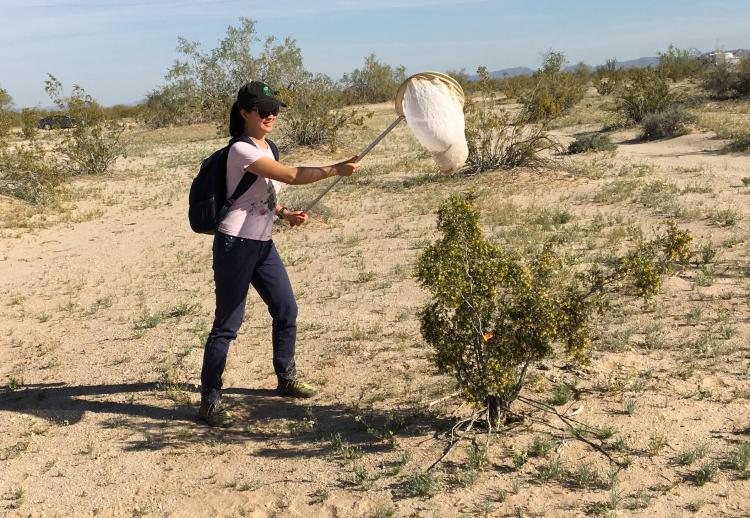Polyploidy and Diversification of the Creosote Bush
Polyploidy - whole genome duplication - is common among flowering plants, but its role in driving patterns of biodiversity, structuring plant communities, and influencing plant-animal interactions remains poorly known. Will Weaver, a recent graduate of EBIO, and Julienne Ng, a postdoc in the Smith Lab, accompanied Rob Laport to the Sonoran Desert of southern Arizona and California this spring to investigate pollinator visitation and reproductive interactions between diploids (two copies of the genome), tetraploids (four copies of the genome), and hexaploids (six copies of the genome) of the creosote bush (Larrea tridentata). It was a stellar year for flowers in the desert southwest, with many plants blooming abundantly that are usually quite sparse. It was also a good year for native bees, the primary pollinators of creosote bush with 20 specialist species, and the team was able to collect a lot of data on ploidy-specific visitation. The abundant bloom also helped with making controlled crosses between the ploidies where they co-occur, information crucial for understanding the role genome duplication plays in driving patterns of diversification.



Arizona Site
California Site


